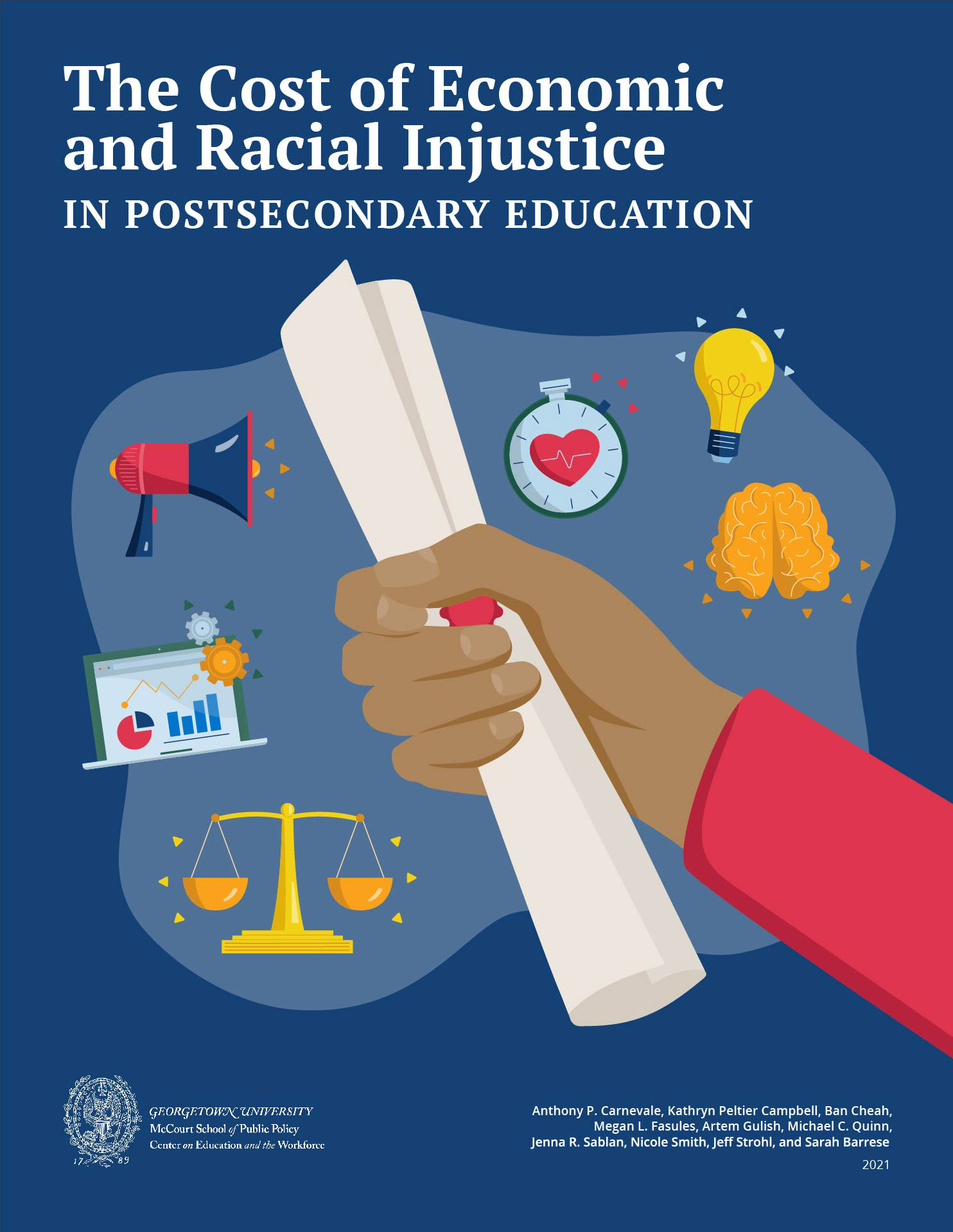The Cost of Economic and Racial Injustice in Postsecondary Education
Summary
In partnership with the Postsecondary Value Commission, we conducted a thought experiment on the costs of inequality in the US education system. Our simulation found that the US economy misses out on $956 billion per year, along with numerous nonmonetary benefits, as a result of postsecondary attainment gaps by economic status and race/ethnicity. The Cost of Economic and Racial Injustice in Postsecondary Education finds that closing these gaps would require an initial public investment of at least $3.97 trillion, but the benefits would outweigh the costs over time. Equalizing educational attainment without increasing student debt for low-income adults could also boost GDP by a total of $764 billion annually.
America’s Education System Has a Persistent Problem with Racial and Economic Injustice
Among Americans with earnings in the top 60%, 57% have an associate’s degree or higher, compared to only 28% of earners in the bottom 40%. A greater proportion of White (46%) and Asian/Asian American (64%) adults have an associate’s degree or higher, compared to 21% of Latinx adults and 31% of Black/African American adults.


Source: Georgetown University Center on Education and the Workforce analysis of data from the US Census Bureau, American Community Survey (ACS), 2013–17 (pooled).
Note: Values may not sum to 100 percent due to rounding.
Source: Georgetown University Center on Education and the Workforce analysis of data from the US Census Bureau, American Community Survey (ACS), 2013–17 (pooled).
Note: The figure shows the educational distribution in the population ages 25 to 64. AIAN/NHPI stands for American Indian, Alaska Native, Native Hawaiian, and Pacific Islander. Values may not sum to 100 percent due to rounding.


Equalizing Postsecondary Outcomes by Economic Status and Race/Ethnicity Would Involve Substantial Gains in Postsecondary Attainment
If attainment levels rose to match those of the top 60 percent of earners and White adults, more than half of the population would have an associate’s degree or higher.
Source: Georgetown University Center on Education and the Workforce analysis of data from the US Census Bureau, American Community Survey (ACS), 2013–17 (pooled).
Note: The figure shows an adjustment of the educational distribution in the population ages 25 to 64. AIAN/NHPI stands for American Indian, Alaska Native, Native Hawaiian, and Pacific Islander. Values may not sum to 100 percent due to rounding.
Equitable Educational Attainment Would Have Monetary and Nonmonetary Benefits to Society
Annual societal gains of $956 billion would include boosts to GDP and reductions in spending:
- Higher earnings due to increased educational attainment among workers could yield a $308 billion annual increase in tax revenue.
- Spending increases on goods and services could result in an annual GDP boost of $542 billion.
- Higher attainment levels could result in $33.7 billion in annual savings from a reduced need for federal public assistance programs.
- Since people with more education are less likely to be incarcerated, increased educational attainment could yield a $13.8 billion annual reduction in public criminal justice expenditures by reducing the number of incarcerated people.
- Public health spending is lower for people with higher levels of educational attainment, potentially resulting in savings of $58.7 billion annually.
Nonmonetary benefits to society would include:
- Increased critical thinking abilities
- Rise in happiness
- Stronger civic engagement
- More pluralistic orientations
- Better health
- Boosts in agency and empowerment
- Lower inclinations toward authoritarianism
Resources
The Cost of Economic and Racial Injustice in Postsecondary Education finds that the US economy misses out on $956 billion per year, along with numerous nonmonetary benefits, as a result of postsecondary attainment gaps by economic status and race/ethnicity. Improved career counseling at the college level could further narrow earnings gaps. However, wealth inequality is too big a problem for education to solve alone because it can’t erase gaps created through centuries of oppression and discrimination.

